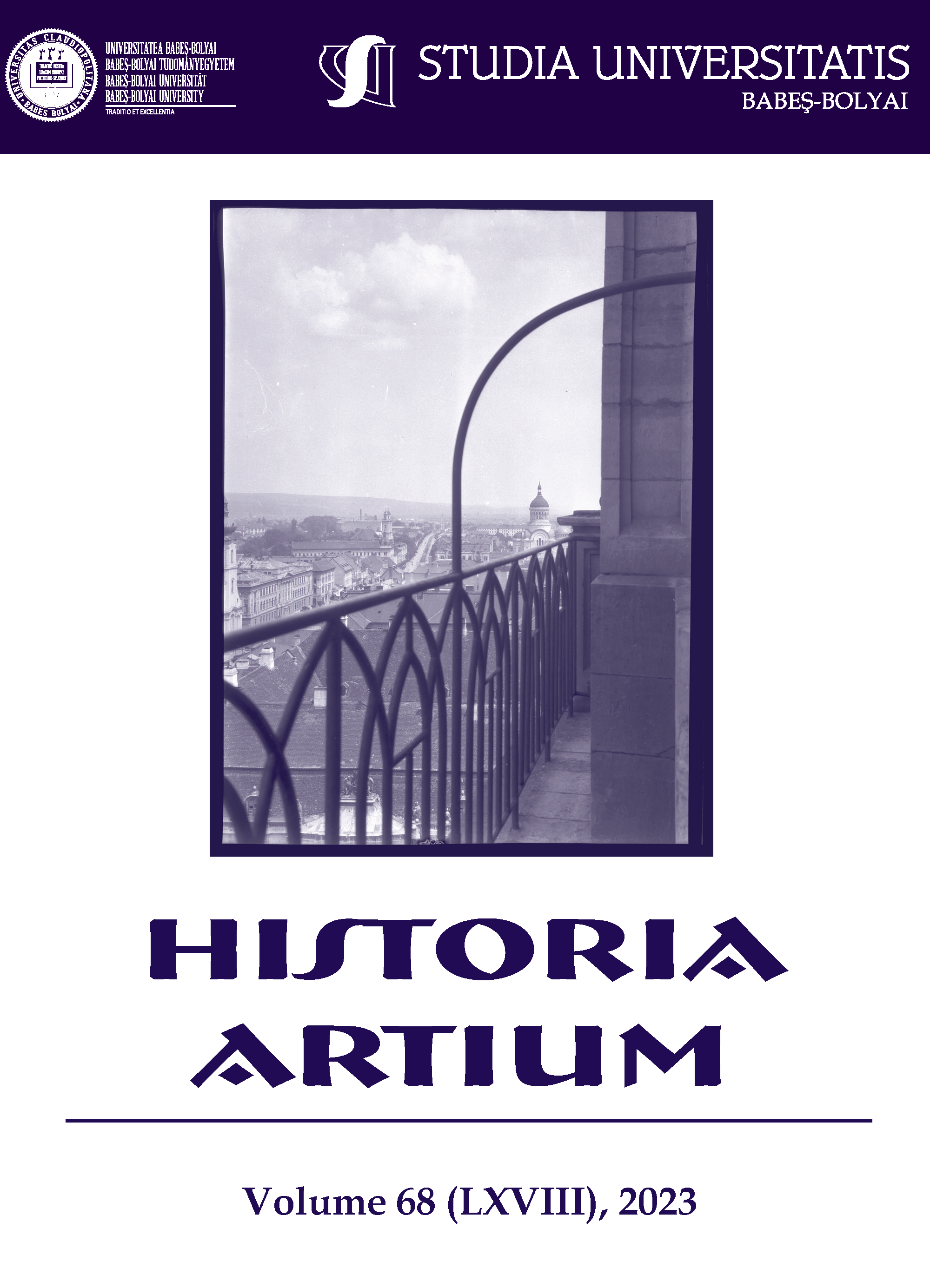Is “Conservation in Ruin” Always the Best Solution? The Case of the Romanesque Church in Gârbova
DOI:
https://doi.org/10.24193/subbhistart.2023.03Keywords:
Gârbova, Romanesque church, conservation, ruin, 1960s.Abstract
Is “Conservation in Ruin” Always the Best Solution? The Case of the Romanesque Church in Gârbova. As the leading institution in charge of built heritage protection in Romania after 1952, the Directorate of Historical Monuments (DHM) took essential steps in funding, designing, and conducting various conservation works on sites endangered by earthquakes, looting, improper use, or defective historic restorations. Partially demolished by the local community in the previous centuries and seriously affected by neglect, the Romanesque Lutheran church in Gârbova, Alba County, was in the 1960s on the verge of collapse. After a thorough cause analysis, the DHM managed to prevent disaster by undertaking a rescue intervention in line with the international trends of the time. Thus, the site became one of the first DHM projects to design the preservation of a church in a state of ruin rather than its complete reconstruction. Part of our more extensive research on Transylvanian heritage conservation during the Communist regime of the 20th century and based on previously unpublished information found in the archives of the National Heritage Institute, our study aims at showing that despite DHM’s best intentions, the church lost the chance to be more than a romantic ruin to these days. By rigidly applying the international restoration principles, the Directorate disregarded the parishioners’ will, even though this was one of the very few examples where the owner was still interested in the monument and even suggested its adaptive reuse as a funerary chapel due to its location in the village graveyard.
References
Archival documents
Corespondență [Correspondence], 1956–1973, The Directorate of Historical Monuments (DHM) Fund, File no. 5077, referring to the Ruin of the Romanesque Church in Gârbova, Alba County, Archives of the National Heritage Institute, Bucharest (Hereinafter, DHM Fund).
Releveu [Survey], 1960, DHM Fund, File no. 5078.
Project 41A/1965, DHM Fund, File no. 5079.
Project 41/1963-1965, DHM Fund, File no. 5080.
Books and journals
***. “Cronică - Principalele lucrări de restaurare a monumentelor istorice din Republica Socialistă România (1959-1969)”, Buletinul Monumentelor Istorice 39, no. 1 (1970): 73–78.
***. “Istoricul INP”, Institutul Național al Patrimoniului, https://patrimoniu.ro/ro/articles/istoric, accessed on June 21, 2023.
Angelescu, Mariana, Gündisch, Gustav, Klein, Albert, et al. “Restaurarea unui monument de arhitectură din epocile romanică și gotică în cadrul ansamblului de monumente feudale de la Sebeș-Alba”, in ***, Monumente istorice. Studii și lucrări de restaurare, 90–119. București, 1960.
Ashurst, John (ed.). Conservation of Ruins. London: Routledge, 2007.
Balogh Edgár (ed.). Romániai magyar irodalmi lexikon: Szépirodalom, közírás, tudományos irodalom, művelődés I. (A–F). București, 1981, http://mek.oszk.hu/03600/03628/
html/b.htm#B%C3%A1gyujLajos, accessed June 21, 2023.
Balș, Ștefan. “Restaurarea cetății țărănești din Câlnic”, in ***, Monumente istorice: studii și lucrări de restaurare. București: Direcția Monumentelor Istorice, 1965.
Curinschi-Vorona, Gheorghe. Arhitectură. Urbanism. Restaurare. București: Editura Tehnică, 1996.
Davies, Michael. “New Life for Old Ruins”, The Building Conservation Directory (2011), https://www.buildingconservation.com/articles/life-for-ruins/life-for-ruins.htm, accessed June 21, 2023.
Frenda, Antonino, Silvia, Soldano, and Patrizia, Borlizzi. “Ruins: Living Heritage. Conservation, Restoration and Enhancement”, Protection of cultural heritage, no. 10 (2020): 1–18.
Gerevich Tibor. Magyarország románkori emlékei. Budapest: Műemlékek Országos Bizottsága, 1938.
Halaváts Gyula. “Úti jegyzetek Kelnek, Vingárd, Szászorbó környékéről”, Archeológiai Értesítő, no. XXVII (1907): 205–222.
Horwath, Walter. “Der Emporenbau der romanischen und frühgotischen Kirchen in Siebenbürgen”, in Siebenbürgische Vierteljahrschrift, no. 58 (1935): 69–75.
Jokilehto, Jukka. “Authenticity in Restoration Principles and Practices”, Bulletin - The Association for Preservation Technology, no. 3–4 (1985): 5–12.
Kent, Robin. “Heritage in Ruins. The Maintenance and Preservation of Ruined Monuments”, The Building Conservation Directory (2003), https://www.buildingconservation.com/
articles/heritageruins/heritageruins.htm, accessed June 21, 2023.
Müller, Friedrich. Die kirchliche Baukunst des romanischen Styles in Siebenbürgen. Wien: Kaiserlich-Königlichen Hof- und Staastdruckerei, 1859.
Oprescu, George. Bisericile cetăți ale sașilor din Ardeal. București: Editura Academiei R.P.R, 1956.
Roth, Victor. Geschichte der deutschen Baukunst in Siebenbürgen. Strassburg: Heitz&Mündel, 1905.
Roth Victor. Die kirchlichen Baudenkmaler des Unterwaldes Hermannstadt: 1922.
Rus, Ioana. “Cetatea din Câlnic. Un monument restaurat în anii 1960-1964”, Ars Transilvaniae, no. XXI (2011): 105–134.
Rus-Cacovean, Ioana. Dezbateri principiale cu ocazia restaurării Bisericii Reformate de pe Strada Kogălniceanu din Cluj în anii 1957-1962”, in Istoria ca interogație. Mariei Crăciun, la o aniversare, 587–611. Cluj-Napoca: Editura Argonaut, 2020.
Rus-Cacovean, Ioana. “A Disaster for the History of Transylvanian Architecture, a Disgrace for the Local Bodies that Take Care of it and a Load on the Conscience of Architects and People of Culture from This Country. The Fate of the Bánffy Castle in Bonțida During the Communist Regime in Romania”, Revista Brukenthal. Acta Musei (2021): 813–831.
Sas Péter. “Bágyuj Lajos műemlékfelújításai”, Művelődés közművelődési folyóirat LIX (2006), http://www.muvelodes.ro/index.php/Cikk?id=261, accessed on June 21, 2023.
Scarbrough, Elizabeth. “Authenticity in Ruins: Art Restoration, Architecture and Beautiful Decay”, ARCADE, no. 33.2 (2015).
Stanley-Price, Nicholas. “The reconstruction of ruins: principles and practice”, in Conservation: principles, dilemmas and uncomfortable truths, edited by Alison Richmond, and Alison Bracker, 32–46. London: Routledge, 2009.
Szabó László. Árpádkori magyar építőművészet. Budapest: 1913.
Thompson, M. W. Ruins: their preservation and display. London: British Museum Press, 1981.
Vătășianu, Virgil. Istoria artei feudale în Țările Române. București: Editura Academiei R.P.R, 1959.
Velescu, Oliver. “Evidența monumentelor istorice în țara noastră”, in ***, Sesiunea Științifică a Direcției Monumentelor Istorice, ianuarie 1963, 61–69. București, 1963.
Velescu, Oliver. “Inventarierea monumentelor istorice din România. Retrospectivă istorică”, Buletinul Comisiei Monumentelor Istorice, no. 1–2 (2012): 83–147.
Downloads
Published
How to Cite
Issue
Section
License
Copyright (c) 2023 Studia Universitatis Babeș-Bolyai Historia Artium

This work is licensed under a Creative Commons Attribution-NonCommercial-NoDerivatives 4.0 International License.






